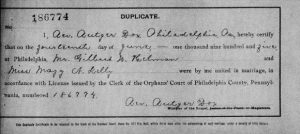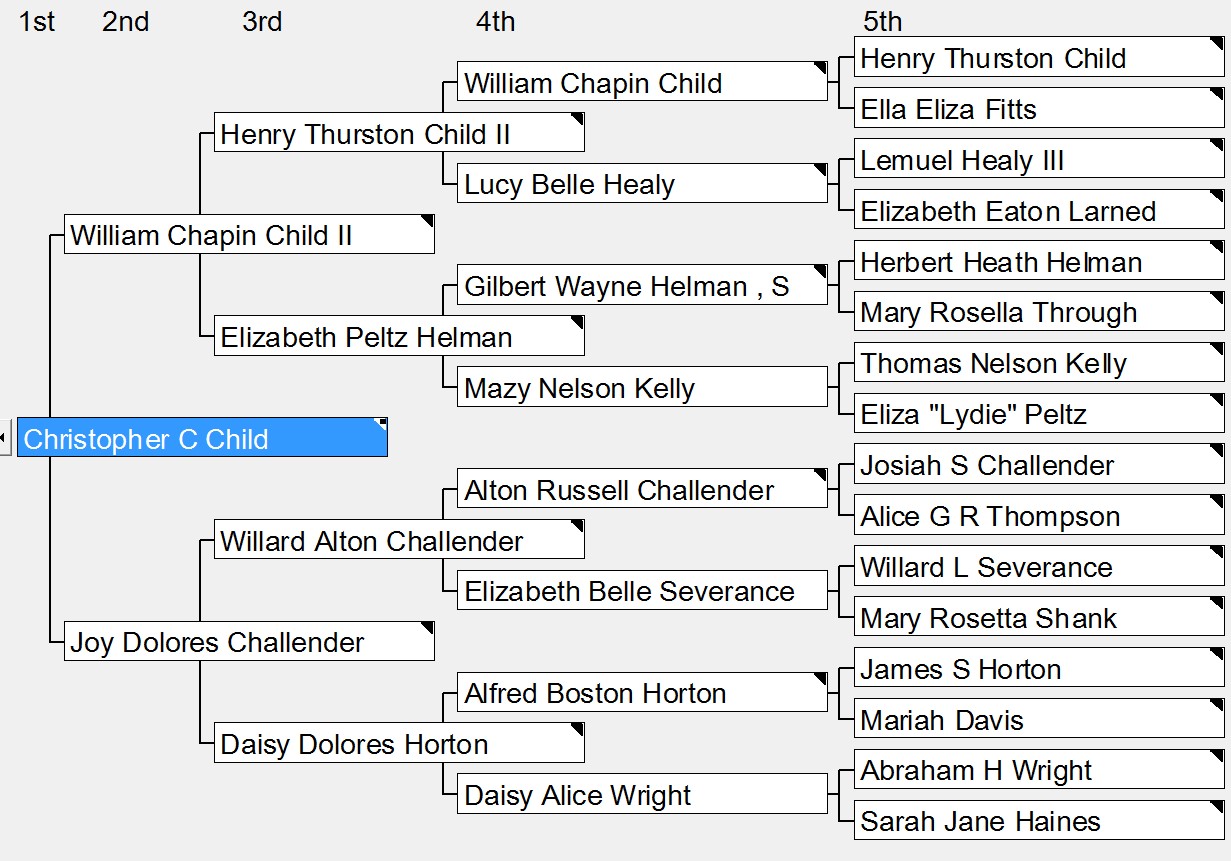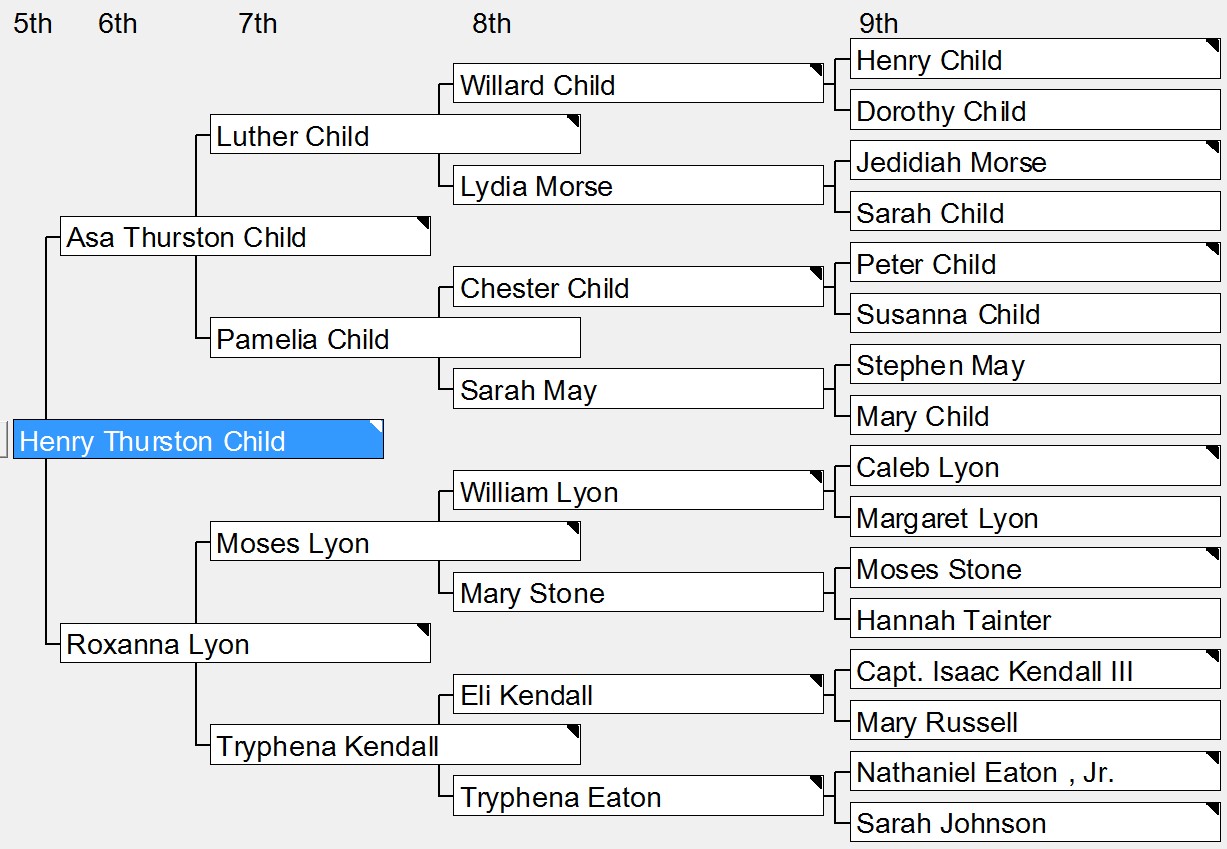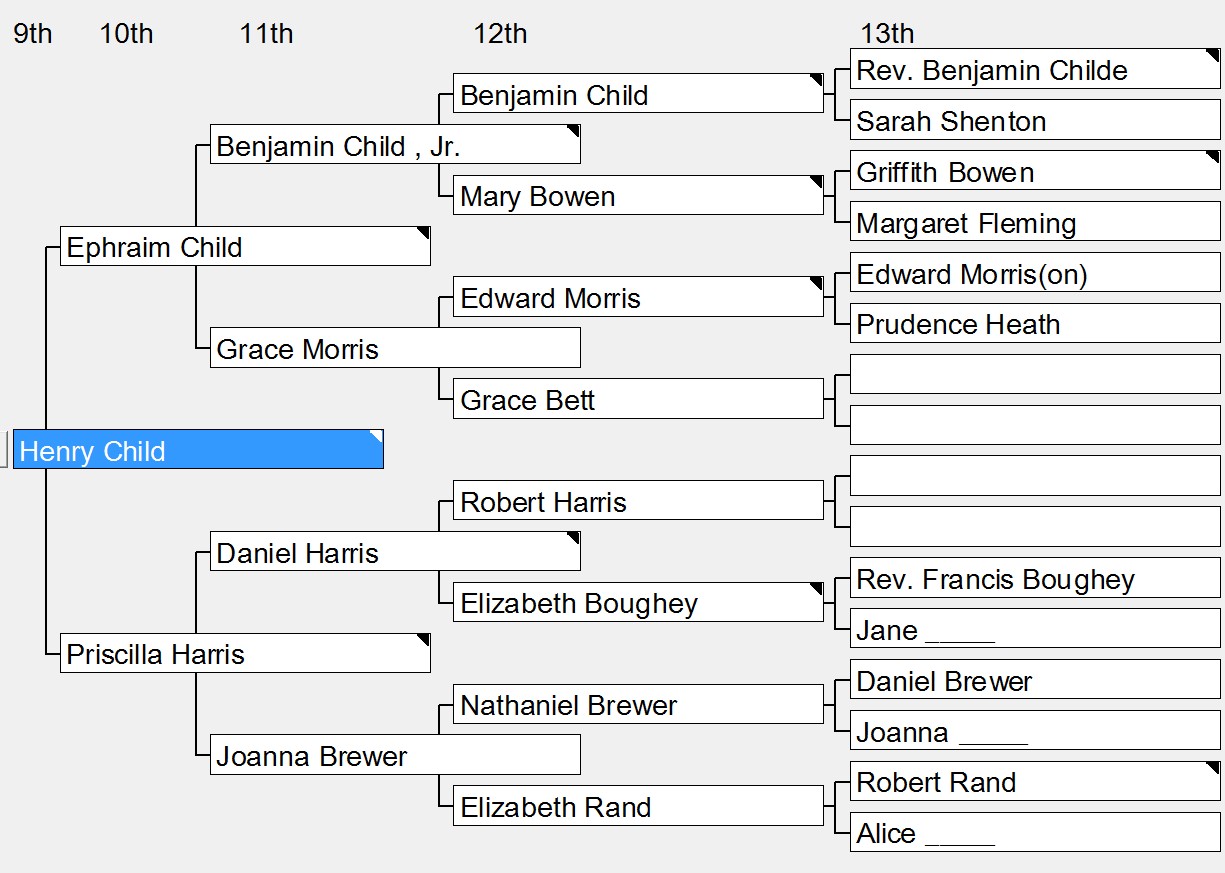
One of Scott Steward’s recent posts reminded me of several conversations I have had with colleagues (not all of them genealogists) on how much we can fill in on our ahnentafeln [German for ancestor tables].
Several staff members at NEHGS have formed a running group called the Runnintafels (my wife came up with the name, and she is not a genealogist). In thinking of ideas for shirts, etc., I queried the team with how “complete” their ahnentafeln were – first 15 ancestors, 31, 63? For the staff who responded this is what I got: Andy Hanson-Dvoracek and Dani Torres had their first 15 (Dani said “the Mexican side gets spotty beyond this”); Ginevra Morse had her first 31 (“Still looking for my 3x great-grandparents on my Italian side”); and James Heffernan and myself both had our first 63 (great-great-great-grandparents). For both James and myself, it’s our Irish ancestors that prevent us from going further, along with my mysterious ancestor John A. Through alias True.
Scott also pointed out how we might be complete or not in terms of filling out births, marriages, and death dates, and this brought up my own journey and struggle there. I first went to Salt Lake City on an NEHGS tour in 1998, when I was a senior in high school. I had been doing my own genealogy for eight years and had already worked one summer for the Research Services. While I had many fantastic results on all sides of my family, the highlight was finding the 1905 marriage in Philadelphia of my great-grandparents, Gilbert Wayne Helman and Mazy Nelson Kelly, shown above.
With this date I had “completed” every birth, marriage, and death date back to my great-grandparents. (While the process of finding this record only took an hour or so, now I could find this on FamilySearch in a few seconds!)
Now nearly 20 years later, I have largely completed the next generation, but there still remains one date that eludes me. This is the marriage in Philadelphia of Mazy’s parents, Thomas Nelson Kelly and Eliza Peltz, who probably married around 1876. I suspect the marriage is somewhere on Family History Library Film #1769064, which remains unindexed and has many certificates of less-than-ideal quality.
With this date I had “completed” every birth, marriage, and death date back to my great-grandparents.
Friends have checked unsuccessfully at the Philadelphia City Archives, and I have contacted several churches where they may have gotten married. (The problem: Eliza’s sister married in a United Presybterian Church, her mother was baptized a Lutheran, Thomas was baptized an Episcopalian, and his parents were married in a Scots Presbyterian Church, so who knows the church in which they actually got married.) Oh, well, if I do find the record, the find will be all the more exciting.
While I definitely lose ancestors past my great-great-great-grandparents through both my father and mother, I am remarkably complete through my patrilineal New England ancestors for the full five generations, and so forth back to the seventeenth century:
First I start with me (complete):
Then I just go to my great-great-grandfather Henry Thurston Child (still complete):
Then finally to his great-great-grandfather Henry Child:
By this point everyone is a seventeenth-century immigrant to Massachusetts Bay Colony, or has parents back in the British Isles, and this “spur” of ancestry is complete for twelve generations. The two with unknown parents in the thirteenth – Grace Bett and Robert Harris – are very likely the first of their family in Roxbury, Massachusetts.
So when it comes to “what do I know,” it really depends on what line I’m looking at.



Gale Ion Harris usually tracks New Englanders with the Harris name. Did you contact him about this particular Harris family?
I have all of my fourth great grandparents complete, by the way and it would be up to fifth if it was not for an Italian “foundling” named Antonio Sposito born about 1811 in Italy that spoils the completion of yet another generation. His marriage record lists his parents as “unknown”. And unless DNA evidence can be utilized, that’s all it can be done at this point.
The most recent article on Robert Harris relates to his wife, by Robert Battle, “The English origin of Elizabeth1 (Boughey) Harris of Roxbury and Brookline, Massachusetts,” New England Historic and Genealogical Register, 159 (2005):327-32. I do not believe Gale Ion Harris has written an article on the first generation of this family, here are many of his Harris articles – http://fasg.org/fellows/current-fellows/gale-ion-harris/
Sorry: I don’t understand the point. The benefit of an ahnentafel is the elimination of the bulk of multiple pedigree charts.
Thus is good stuff Chris! And an exercise well worth repeating until we are able to fill them all in. At least for me it can be too easy to forget a line to follow up on “here and there” – while doing something like this helps me to remember, “just what do I know?”
In my case the “exercise” shows the difference in being able to research my New England roots successfully and the brick walls that exist in the research of my Middle Atlantic and Virginia roots. On my father’s New England side all ancestors can be traced to the 17th century except for those of my great-great-grandfather who came by himself to Boston as a boy around 1833 and then settled on Cape Cod and the parents of William Todd (a 5x great-grandfather) who was married in Boston in 1742. The story is much different with my mother’s family. Luckily her one grandmother had New England roots. Most of the other branches have multiple problems and I am lucky to find proof of my 18th century ancestors.
Then there’s another game/goal to try to fill in all lines back 10 generations. On both my husband and my own lines, I’m only about halfway there.
Well, this is serendipitous. Benjamin Child Jr. and Grace Morris are my 7th g-grandparents. Thanks for giving me some leads!
I’m really happy to see this discussion about how far back others have managed to find ancestors. I use the pedigree chart daily to see how far back I’ve gone. Now I don’t feel too bad! I’ve been researching my family for about 40 years. My father’s family, all in Virginia, goes back to our immigrant ancestor, John Kelley, who arrived in the late 1600s or early 1700s; we’ve never been able to get him cross the pond. On most of my father’s lines, I have 7 generations or more. On my mother’s side, my great grandfather, Patrick Mooney, born in Dublin, Ireland, was adopted and those who knew who his parents were took it to their graves. Her paternal line is Heckman, from Germany. I hired a research firm for that, and some of those lines go back to the 16th century. I am much more successful researching my friend’s families, especially when they lead back to Massachusetts.
I had the good fortune to stumble upon the fact that I have a “gateway ancestor”, Olive Farwell (nee Welby). A great deal of work has been done by experienced genealogists on the approx. 200 early settlers whose roots included nobility/royalty. Believe me, I do not have the skills to research this all myself, so having it already done seems like a miracle!
I am researching my daughter’s family tree. It is solid going back to her great great great grandparents, except for one holdout.
I think you and I are cousins.